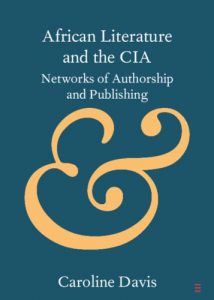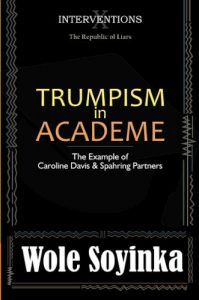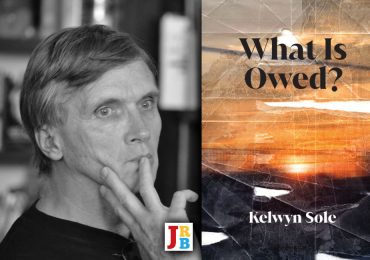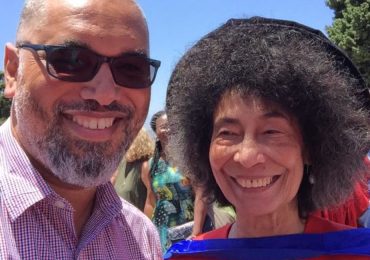
In 2020, Caroline Davis, a British scholar, now based at England’s University College London, published the book African Literature and the CIA: Networks of Authorship and Publishing (Cambridge University Press). The author argued that the United States Central Intelligence Agency had embarked on a covert operation from 1961 to fund the publication and dissemination of specific books abroad in a bid to extend American influence, using publishers, literary agents and, where possible, co-opted authors. By 1967, more than one thousand books had been produced or sponsored by the CIA under this covert programme, which was funded to the tune of some $265 million a year.
The CIA’s Culture Wars in Africa
The programme was part of America’s Cold War cultural struggle with the Soviet Union, which was also trying to use activist art, literature and plays to sway countries into its ideological camp. Washington thus justified its activities as an effort to counter ‘communist subversion’. In her book, Davis sets out to assess whether the CIA succeeded in infiltrating African scholars and institutions to produce ‘new circuits of cultural and literary power’, and to examine the extent to which the career and work of individual African scholars were assisted by the CIA’s literary networks. She focuses on three writers: Nigeria’s Wole Soyinka, South Africa’s Nathaniel Nakasa—who died in suspicious circumstances after spending the night in the New York apartment of the executive director of the CIA-funded Farfield Foundation—and Botswana’s Bessie Head.
The CIA set up the Orwellian-sounding Congress of Cultural Freedom in Paris in 1950, with offices in thirty-five countries. It sponsored conferences, literary prizes, art exhibitions and more than twenty prestigious magazines, including the London-based Encounter, the US-based Partisan Review, the German-based Der Monat, the French-based Preuves, the Italian-based Tempo Presente, the Japanese-based Jiyu, and the Latin American-based Mundo Nuevo. The CCF consisted of a network of Ivy League-dominated conservative cold warriors who were waging a cultural battle against what they considered to be ‘liberal’ academic, cultural and literary institutions across the globe. Their goal was to foster global literature to follow the ‘conservative, modernist’ aims of ‘promoting art for art’s sake’, in contrast to the proselytising Soviet aim of using art for explicitly liberationist purposes.
In 1952, the CIA also set up the Farfield Foundation in New York, which masqueraded as a philanthropic organisation ‘to strengthen the cultural ties which bind the nations of the world’. This foundation indirectly supported the work of African writers through largely British and American publishers, and also provided travel grants, scholarships and salaries. The American intelligence agency thus waged cultural war not through crude propaganda, but by the more subtle means of the infiltration of establishment publications, thus ironically helping an African literary canon arise in the process. This was not direct censorship, but a careful identification of academics and scholars trained in the Western tradition, and with a favourable sensibility in their approach to the methods and aesthetics of this scholarship: Wole Soyinka, Chinua Achebe, Christopher Okigbo, John Pepper Clark-Bekederemo, Lewis Nkosi, Dennis Brutus, Es’kia Mphahlele, Alex La Guma, Ama Ata Aidoo and Kofi Awoonor.
These were, of course, the cream of Africa’s post-independence literary scene. The covert CIA funding of the CCF was exposed in the New York Times in 1966 and Ramparts in 1967. When the revelations surfaced, all these scholars were careful to note that their work was independent, and had not been influenced by CIA funding, as borne out by the literature they produced. These writers were far from being willing recipients of CIA patronage; it’s certain that even without external funding they would have risen to the top. Their work was also far from being depoliticised, as the CIA’s cultural architects had hoped, and much of it, including many works in the Heinemann African Writers Series—which produced 273 books and created Africa’s post-independence literary canon—was anticolonial, targeting European powers like Britain, France and Belgium. As South Africa’s Mphahlele angrily noted in response to the revelations:
Yes, the CIA stinks … We were had. But in Africa, we have done nothing with the knowledge that the money came from the CIA; nor have we done anything we would not have done if the money had come from elsewhere … it is dishonest to pretend that the value of what has been achieved is morally tainted.
Through the CCF and Farfield Foundation, the CIA financed arts centres, media broadcasts, conferences and theatre productions, establishing literary hubs in Ibadan, Kampala, Nairobi, Johannesburg and Cape Town, as well as using existing hubs in London and Paris, and infiltrating establishment literary and media outlets. The agency deliberately focused on ‘high art’, especially plays, poetry and other works of literature produced by world-class African writers and scholars, and funded many of post-independence Africa’s leading magazines in the 1960s: Transition, Black Orpheus, The Classic, Africa South and New Africa. It further sponsored book publications by Présence Africaine in Paris, Chemchemi in Kenya, and Mbari in Nigeria. The spy agency thus paradoxically seemed to be empowering African publishing by creating indigenous publishing outlets that were autonomous from their previously colonial metropolitan centres.
Soyinka and His CIA Discontents
A chapter in Davis’s book entitled ‘Wole Soyinka, the Transcription Centre, and the CIA’ has caused a storm of controversy. In it, Davis sets out to assess the extent to which CIA support had contributed to Soyinka’s ‘canonical status’. She alleges that Africa’s first Nobel Literature laureate was supported by three CIA-funded organisations: the US-centred CCF and the Farfield Foundation, and the London-based Transcription Centre. She further claims that this assistance aided Soyinka’s meteoric rise to international prominence. Davis has used archival records from the CCF and the Transcription Centre to seek to substantiate her claims, and thus is able to quote extensively from personal correspondence between Soyinka and his alleged CIA-backed funders. Davis admits that ‘there is no evidence that Soyinka was aware of the CIA source of his patronage during the [early] nineteen-sixties, or that the CCF or its affiliated institutions exercised a direct influence on his writing’. But Davis also asserts that Soyinka became aware of CIA funding of the Transcription Centre in 1967, and had not previously questioned how the Centre got its money.
Davis quotes American scholar Peter Kalliney as insisting that CCF support did not, in any way, turn Soyinka into a ‘US puppet’. while also citing American poet Juliana Spahr’s explosive but unverified claim that the playwright had ‘unusually close ties to the US government’ and met frequently with American intelligence in the nineteen-seventies. Soyinka had himself acknowledged what he described as his unwitting proximity to the CIA in his 2006 memoir You Must Set Forth At Dawn:
… we would discover that we had been dining, and with relish, with the original of that serpentine incarnation the devil, romping in our postcolonial Garden of Eden and gorging on the fruits of the Tree of Knowledge! Nothing—virtually no project, no cultural initiative—was left un-brushed by the CIA’s reptilian coils.
Funding Journals and Conferences
Davis details how the CIA supported journals in which Soyinka was involved, including Black Orpheus. The Ibadan-based Mbari Writers and Artists Club was also said to have received CIA funding. She notes that CIA-funded conferences prominently featured Soyinka: the 1962 Conference of African Writers of English Expression in Kampala; the Berlin Arts Festival in 1964; and the 1966 First World Festival of Negro Arts in Dakar. Soyinka himself was editing Africa’s leading politico-cultural journal, Transition, in exile in Accra between 1973 and 1976, when CIA support to it through the CCF was exposed, and it was forced to shut down.
Davis argues that, from 1963, Dennis Duerden, the British Director of the Transcription Centre—through largesse from the Farfield Foundation—effectively became Soyinka’s chief external promoter. Duerden enthusiastically funded the playwright’s attendance at conferences and festivals, and financed many stage productions. The Briton also reportedly funded—in partnership with New York’s National Television and Radio Centre—eight thirty-minute television programmes featuring Soyinka and South African author Lewis Nkosi interviewing other leading African writers, including Nigeria’s Chinua Achebe, Kenya’s Grace Ogot, and Guinea’s Camara Laye, with Soyinka himself also being interviewed by Nkosi.
Staging Theatre and Publishing Plays
Davis notes that the drama competition that Soyinka famously won on the eve of Nigeria’s independence in 1960 (to stage his seminal play, ‘A Dance of the Forests’) had been established by the CCF through CIA agent Michael Josselson. Duerden reportedly bought the rights to Soyinka’s play ‘The Swamp Dwellers’ in 1964 for broadcasting in the US, with the Farfield Foundation supporting the production. Davis notes that Soyinka was lukewarm about the project, and had advised Duerden to abandon it before its low-key release in 1966. Duerden also successfully pushed for the Farfield Foundation to fund the production of Soyinka’s ‘The Lion and the Jewel’ at London’s Theatre Royal for a month between September and October 1965.
According to Davis, Soyinka then allegedly visited New York in 1966 to request funding from the Farfield Foundation. Duerden registered the Orisun-Ijinle Theatre Company in London, with Soyinka as its Artistic Director. Davis, however, notes that the playwright was unenthusiastic about the London-based group, with his focus firmly on his own Orisun Theatre Company in Nigeria. The Transcription Centre reportedly further funded a 1966 tour of Britain by Soyinka through the Arts Council. The visit took in a production of Soyinka’s 1963 play ‘The Trials of Brother Jero’ at the Hampstead Theatre Club in London, directed by South Africa’s Athol Fugard; a staging of Soyinka’s ‘The Lion and the Jewel’ at London’s Royal Court Theatre; visits to Leicester and Southampton universities; and television appearances on the BBC and Granada Television. After the CIA link was exposed in 1966, Duerden reportedly began to turn off Soyinka’s funding taps.
Davis also describes how Duerden worked closely with Rex Collings, Soyinka’s Oxford University Press editor, to publish the Nigerian writer’s plays and poetry, including A Dance of the Forests (1963); The Lion and the Jewel (1963); The Road (1965); and Kongi’s Harvest (1965). After Collings left OUP to join Methuen in 1966, Soyinka followed him. Methuen would later publish Idanre and Other Poems (1967) and Prisonettes: Poems From Prison (1969). Here it must be observed that Soyinka is correct in calling out Davis for unfairly implicitly tarring Rex Collings with the CIA conspiracy brush, without solid evidence.
Protecting a Political Prisoner
During his two periods of imprisonment by the Nigerian government, the Transcription Centre, the Farfield Foundation and the CCF launched an international lobbying campaign for Soyinka’s release. From 1965 to 1966, the playwright was jailed for holding a radio station at gunpoint to prevent the announcement of a victory speech by Nigeria’s Western region premier Samuel Ladoke Akintola after a disputed election. Davis notes that the three organisations further ensured that Soyinka’s plight was kept alive by Amnesty International, the New York Times and the Sunday Times (London), even sending a lawyer to assess the playwright’s condition, while meeting his £700 legal costs. Soyinka was jailed again for twenty-six months in 1967–1969 for seeking to mediate a peace deal with secessionist Biafra during Nigeria’s civil war. Davis noted that all three CIA-funded organisations once more launched an energetic campaign for Soyinka’s release through Amnesty International, the Times (London) and the UN Educational, Scientific and Cultural Organisation (Unesco). The Farfield Foundation and the CCF both closed down during this period, their covert CIA links having been exposed.
Kongi’s Robust Riposte

Soyinka—popularly referred to by the name of the lead character in his 1965 play ‘Kongi’s Harvest’—produced a characteristically trenchant riposte to these allegations. He published a 165-page essay entitled Trumpism in Academe: The Example of Caroline Davis and Spahring Partners (Bookcraft, second edition, 2021), in which he threatened to ‘pursue these women, Caroline Davis and Juliana Spahr, to the end of the earth and into the pit of hell until they reveal to the world when and where I was meeting CIA agents’. Though Davis never leveled this accusation—it was Spahr who claimed that Soyinka regularly met American spooks, based, she said, on ‘diplomatic cables’—he called for a conference to be organised at Harvard University to confront his accusers. Soyinka further cautioned: ‘The battle is joined. The Republic of Liars has now extended from Nigeria to the United States.’
This was a weighty response to a book chapter of some fifteen pages. Soyinka further wrote to the US government in April 2021 to request that the diplomatic cables cited by Spahr, of his alleged meetings with US intelligence officials, be released under the US Freedom of Information Act. Having not received any documents by the time of his essay’s publication, he described the latter as ‘a holding preliminary recourse’. Despite Davis only briefly citing, in half a sentence, Spahr’s claim about Soyinka’s ties to American intelligence, Soyinka lumped both writers together as ‘the Desperate Dons of historical revisionism’.
Of Spooks and Straw Women
Spahr is strangely cast by Soyinka as a collaborator of Davis’s, rather than simply someone whom the latter quotes in her book. We thus have, in Soyinka’s response, a potpourri of straw women. Soyinka describes Davis and Spahr as ‘neophytes,’ ‘manipulators and liars’, and ‘sloppy scholars and middling poets’. He dismisses both as ‘Trumpian’ academics engaged in spreading lies and engaging in patronising Eurocentric analyses that disparage the achievements of the first generation of post-independence African artistes. He condemns their revelations as ‘a re-hashed, augmented version of an old wives’ tale, full of sound and fury, signifying—piffle’. He laments the fact that the field of humanities is ‘open to any kind of misfit and unscrupulous interloper’. He professes outrage at Davis and Spahr’s ‘act of generational pseudo-intellectual hubris’ produced by ‘a species of academic thuggery’. He never makes it clear, however, how Davis’s 162-footnoted chapter reflects the rumour- and conspiracy-fuelled rabble-rousing nativism of former US president Donald Trump. Davis’s analysis contains sober scholarship; surely it should be challenged on these terms?
Soyinka is on more solid ground when he accuses Davis of trying to portray him and his generation of writers as CIA puppets and ‘international hustlers ready to dance to the donor piper’s tune’. He condemns her methodology as ‘prejudicially selecting from findings of the past industry of others’ and points out that Davis contradicts herself by talking of him directly receiving, and simultaneously covertly obtaining, CIA funds. But we see a regression into the paranoid when Soyinka speculates on whether Davis is working with some of his ‘neo-Tarzanist’ Nigerian critics to discredit him. Davis, along with Spahr, are accused of whipping up ‘the dehydrated froth of long discarded milk to suggest that child poisoners are still alive and on a rampage’, and both women are derided as ‘scholarly muckrakers who continue to insist that there remain juicy but sleazy chunks of meat to regurgitate’.
Soyinka further argues that Davis should have provided the broader context of the Cold War’s cultural struggles, noting that he received book royalties from the Soviet government and also established a close relationship with socialist Cuba, meeting Fidel Castro, engaging the African diaspora community in Havana, and being honoured with a national award. These engagements, however, do not fundamentally negate Davis’s point about CIA funding being indirectly paid to African artists through Western foundations. Soyinka also goes to great lengths in a bid to rebut Davis’s claim that he rose to international prominence through said funding, by highlighting the roles of key admirers of his plays in the Theatre Royal Stratford, the Royal Court Theatre, and the New Shakespeare Theatre, as well as outstanding reviews and excerpts of his work in prestigious outlets such as the Observer and Granta.
It is also important to note that Soyinka had his own, self-made powerful allies in the arts and culture space. African American film producer Ossie Davis produced an adaptation of ‘Kongi’s Harvest’ in 1970. Soyinka also had his own extensive network of academics in the US, and two of his protégés, African American Henry ‘Skip’ Gates Jr and Ghanaian–Briton Kwame Anthony Appiah—whom he had mentored as a Fellow at England’s Cambridge University in 1973–1974—went on to assume powerful positions at Duke, Princeton, and Harvard. Soyinka also notes the role of his contacts in the British parliament and PEN International in campaigning for his release from jail in the nineteen-sixties. He argues that, unlike countries like Cuba and France, the US never actually granted him a national honour.
No End to a Controversy
It is understandable that a Nobel laureate would take umbrage at the suggestion that he was ‘the CIA’s African literary protégé’, a status that saw him ‘propelled to global prominence and designated Africa’s foremost writer’. His retort is that Davis is ‘an unbridled, mendacious hustler’ with ‘an apartheid mind-set.’ Davis’s constant talk of CIA ‘patrons’ certainly does insinuate some form of collusion and control, despite her protestations to the contrary, and gets to the heart of Soyinka’s main beef with Davis: that she ‘has just one predetermined destination and nothing must stand in her way: to write off a generation of African writers and cultural avant-garde as nothing more than CIA protégés, with the celebrated black Nobel laureate in the lead’. The truth of the matter is dodged by all: the Nigerian playwright would clearly have risen to the top of the literary firmament even without CIA support, which could indeed have indirectly assisted his rise to fame, as it did many Western and other writers who unknowingly received similar support.
Any suggestion that Soyinka was also a pro-American agent would not be borne out by his political activism, which frequently condemned US-supported Cold War clients. He did not choose the comfortable life of a CIA-funded operative, and clearly ‘spoke truth to power’ at nearly every opportunity. He was a vociferous and outspoken critic of the warmongering George W Bush administration (2001–2008), and has, for six decades, railed against autocracy in Nigeria, paying the price through detention and exile. Some of these experiences were recorded in the 1971 title The Man Died: Prison Notes of Wole Soyinka, and in his portrayal of the grotesque Nigerian dictator General Sani Abacha in his 2002 play ‘King Baabu’. The playwright also consistently takes on autocracy across the continent, as evident in his 1984 ‘A Play of Giants’ which mercilessly satirises four African autocrats: Zaire’s Mobutu Sese Seko (helped to power by the CIA, before becoming a reliable American Cold War client), Uganda’s Idi Amin, Equatorial Guinea’s Francisco Macías Nguema, and Central African Republic’s Jean-Bédel Bokassa. Soyinka has, however, more recently become close with US-backed Rwandan autocrat Paul Kagame, whose excesses he has failed to condemn.
Instead of a 165-page screed, a proper response to Davis should have, for example, seen Soyinka responding directly to allegations that he visited New York in 1966 to request funding from the CIA-funded Farfield Foundation. The Nigerian playwright questions whether post-independence African festivals had really been funded by the CIA, as Davis asserts. He is unsure whether there was CIA funding of his independence play ‘A Dance of the Forests’, again, as asserted by Davis. But for all his eloquent fervour, Soyinka has not rebutted these allegations in the detailed, evidence-based manner that could have put an end to this debate. He concludes with yet another challenge to Davis and Spahr to an international public debate, which Davis has rejected. Despite the Nobel laureate’s poetic prose and powerful polemic, this controversy is far from over, and to that extent Soyinka will find it hard to escape those notorious ‘reptilian coils’ of the CIA.
- Adekeye Adebajo is a Senior Research Fellow at the University of Pretoria’s Centre for the Advancement of Scholarship (CAS) in South Africa. He is the author of The Trial of Cecil John Rhodes (2020); and editor of The Pan-African Pantheon: Prophets, Poets, and Philosophers (2020). He obtained his doctorate from Oxford University and is a columnist for Business Day (South Africa), the Guardian (Nigeria) and the Gleaner (Jamaica).






In ”Wole Soyinka vs Caroline Davis–The CIA Controversy” by Adekeye Adebajo, the author writes: ”Soyinka–popularly referred to by the name of lead character in his 1965 play ‘Kongi’s Harvest’–produced a characteristically trenchant riposte to these allegations. He published a 165-page essay entitled Trumpism in Academe: The Example of Caroline Davis and Spahring Partners (Bookcraft, second edition, 2021) in which he threatened to ‘pursue these women, Caroline Davis and Juliana Spahr, to the end of the earth and into the pit of hell until they reveal to the world when and where I was meeting CIA agents’. That quote, which Adebajo describes as a threat, was actually used by him in an earlier piece he wrote on the subject, long before ”Trumpism in Academe: The Example of Caroline Davis and Spahring Partners” was published. He used it then without any attribution. The quote, in case he plans to use it again, or for the benefit of other researchers, is not in the 165-page pamphlet. It is in the elaborate interview that Wole Soyinka gave TheNEWS magazine(www.thenewsnigeria.com.ng) in its April 2021 edition titled ”For Me, It Is Humanity First–Wole Soyinka”, shortly after the publication of his 506-page novel, ”Chronicles from the Land of the Happiest People on Earth”.
Kunle Ajibade
Executive Editor/Director
TheNEWS/PM NEWS
Lagos, Nigeria.